BBC Earth newsletter
BBC Earth delivered direct to your inbox
Sign up to receive news, updates and exclusives from BBC Earth and related content from BBC Studios by email.
Animals
Imagine if you could blend seamlessly into the background when trying to avoid a frenemy - or change the texture of your skin to mimic the ground beneath your feet.
Well, some animals can do just that, as a thrifty survival tactic. Here are 9 animals that are true masters of disguise – from the decorator crab who adorns themselves up with surrounding marine debris, to the arctic hare who seasonally changes colour.
1. Giant leaf-tailed gecko
For the giant leaf-tailed gecko it’s a question of survival. They are not only masters of camouflage but are also able to mimic a human-like scream. As they rest on the forest floor of Madagascar during the day, the grey-green fringed flaps on their lower jaws and sides flatten against the surface of the logs, tree trunks and leaf litter. This tactic then hides their outline, increases their own surface area and refracts light, making them practically invisible to a predator’s eye. Their skin is mottled, and species vary in appearance: with colours including tans, greens, greys and browns. Giant leaf-tailed geckos rest with their heads facing downwards to increase their camouflage. Do prepare yourself for a shock if you stumble across one - they open their large crimson mouths and make an alarm call that sounds like a child’s scream! 1
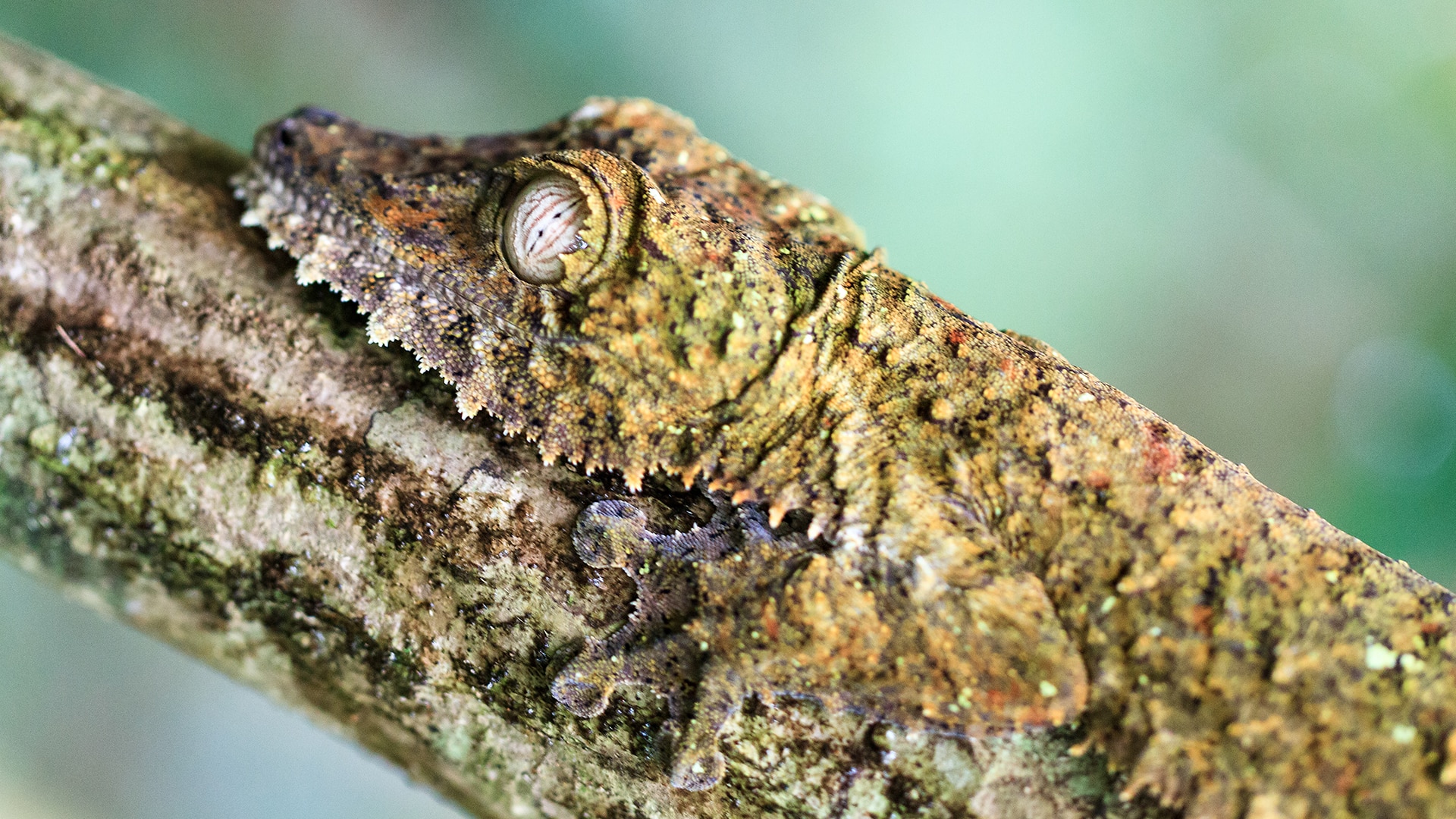
2. Leaf-litter toad
The leaf litter toad, or Rhaebo haematiticus to its friends, is found in South America, although spotting it may be tough as it is so immaculately camouflaged as a dead leaf. Found alongside the rivers and streams of humid forests, its skin patterning allows it to blend in with drifts of dead leaves. This visual trickery gives it vital protection from looming predators. Its camouflage tactics allow it to feed on the insects found in the nutrient rich piles of dead leaves that cover the forest floor. As it is only found in forests, its habitat is under threat from cattle ranching and industrial agriculture.2
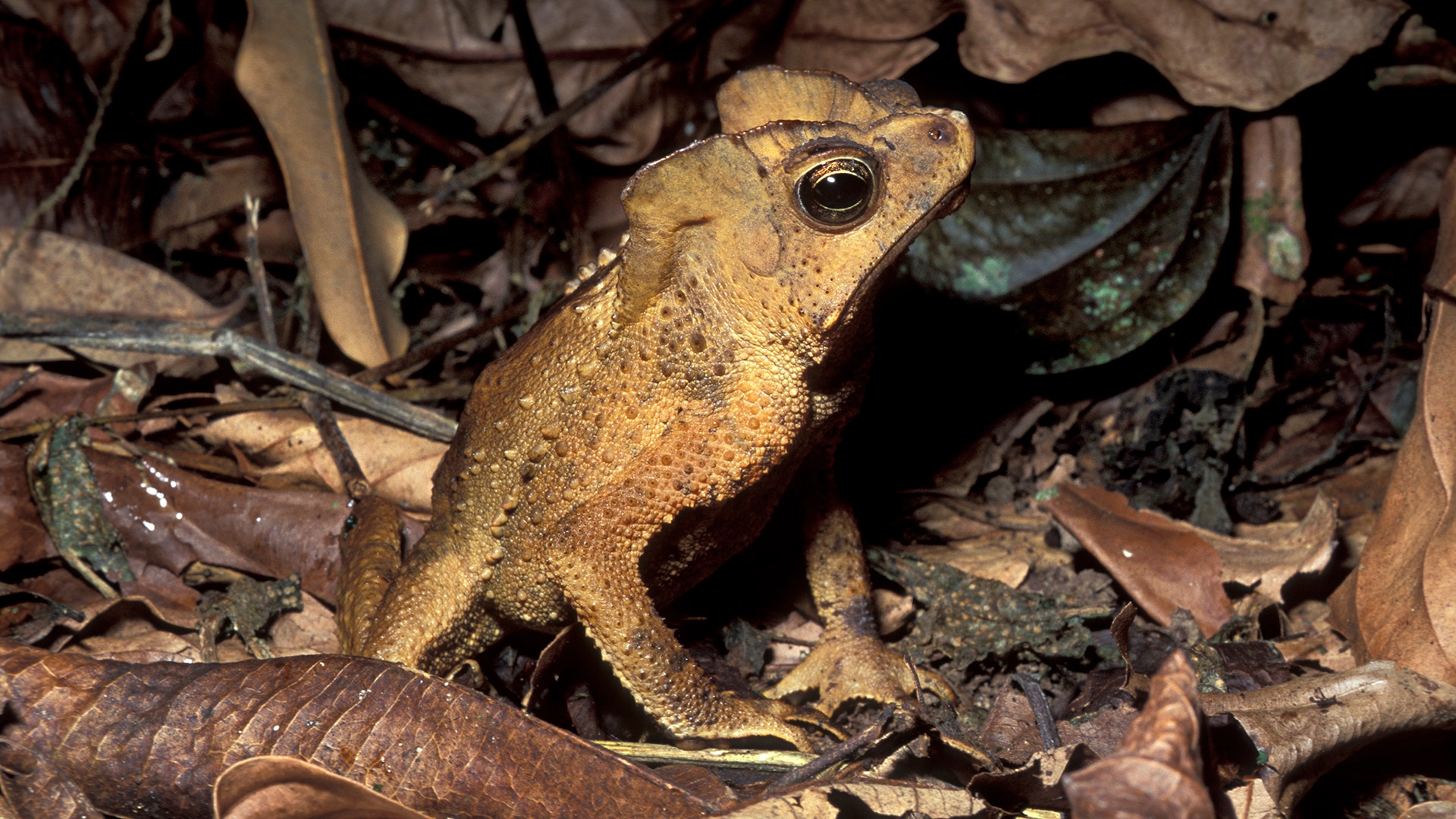
3. Wrap-around spider
Endemic to Australia and parts of Oceania, the wrap-around spider has a concave belly that allows it to flatten itself around the curve of a tree and avoid being spotted by hungry birds. Oval discs run across its abdomen, making it the perfect camouflage against branches. These oval discs give the spider a leopard skin-like appearance, which has given it the nickname ‘leopard spider’. During the day, the wrap-around spider will sit happily hugging its tree, undisturbed, but once the sun’s gone down it rapidly begins constructing an orb shaped web and eating the spoils (prey). At dawn, it destroys its web and returns to its ‘Oh I’m just a bit of tree’ act.3
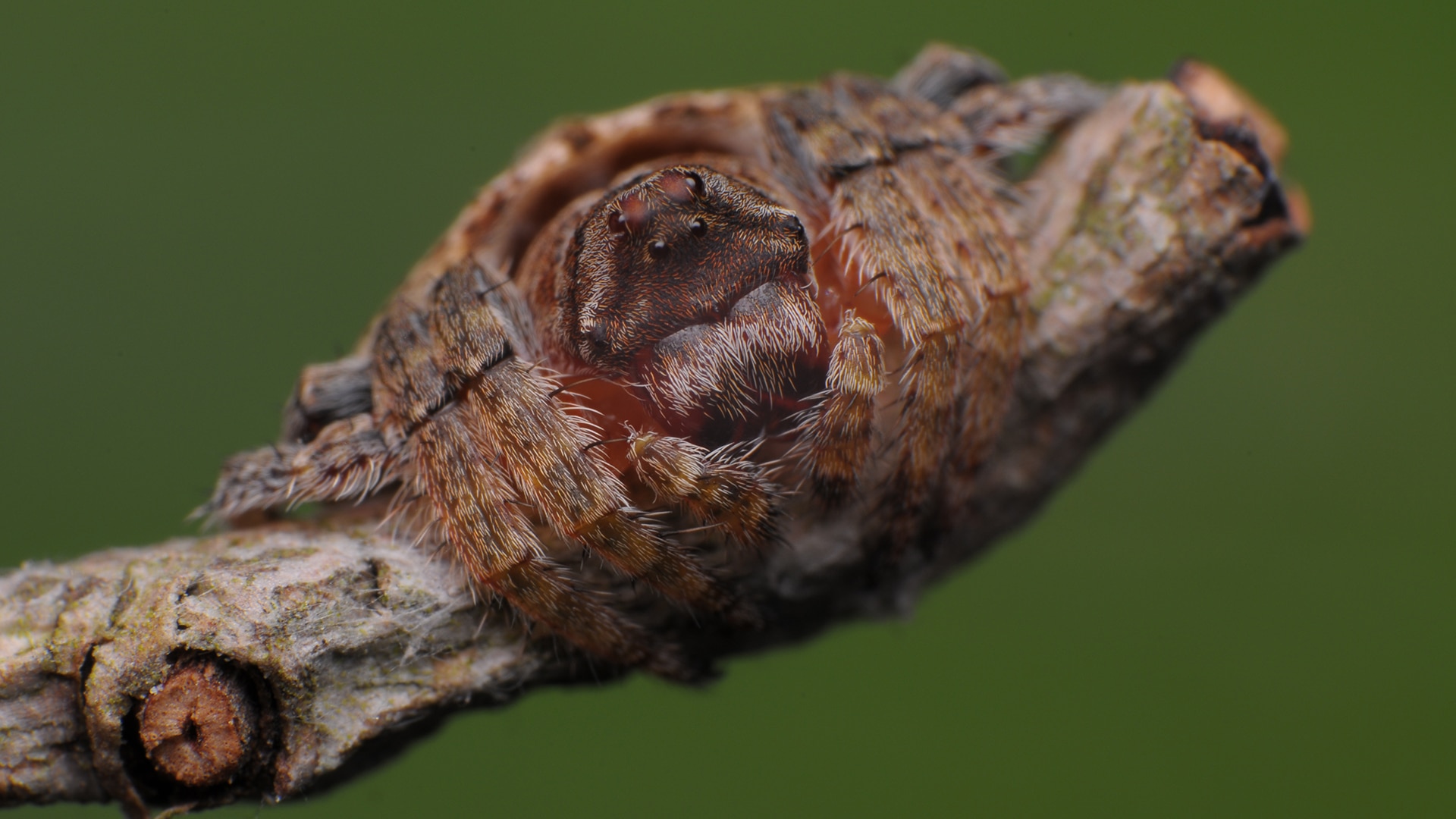
4. Pygmy sea horse
These are the world’s smallest sea horses, standing at a couple of centimetres from nose tip to tail. They live on the Coral Triangle in Southeast Asia, and the bumps you can see on them are calcified tubercles, which they grow to match the polyps of the coral that surrounds them. Their size and staggering ability to camouflage seamlessly into their tropical coral reef habitat means they are at low risk of predation. If they drift to a different coloured coral, their colour will change to blend in once more.4
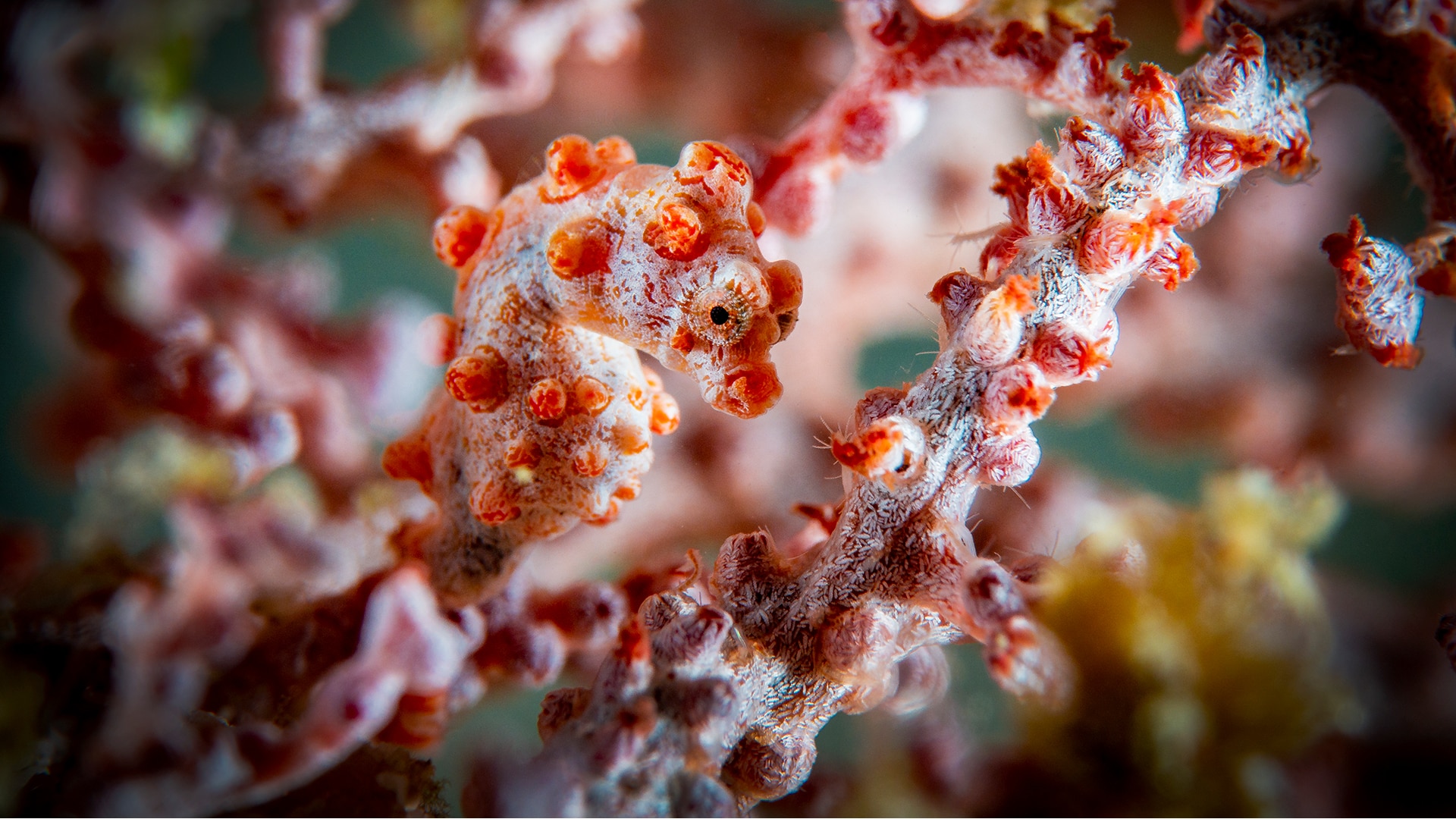
5. Decorator crab
If you’re going to protect yourself from predators, you might as well look fabulous while you do it. Decorator crabs, as the name suggests, deck themselves out with seaweed, coral and sponges to spruce up their surroundings and make themselves more difficult to see against a background of, well, seaweed, coral and sponges. Their shells are covered in tiny, velcro-like hairs so that when they select a suitable ornament, it stays stuck. Some of them are even more clever, deliberately adorning themselves with toxic seaweed, or stinging anemomes, which don’t bother the crabs themselves but would make an unpleasant mouthful for anything that tried to eat them. The best bit? They even recycle. When they’ve grown out of their existing shell, they carefully remove all the decoration and re-attach it to their new home.5
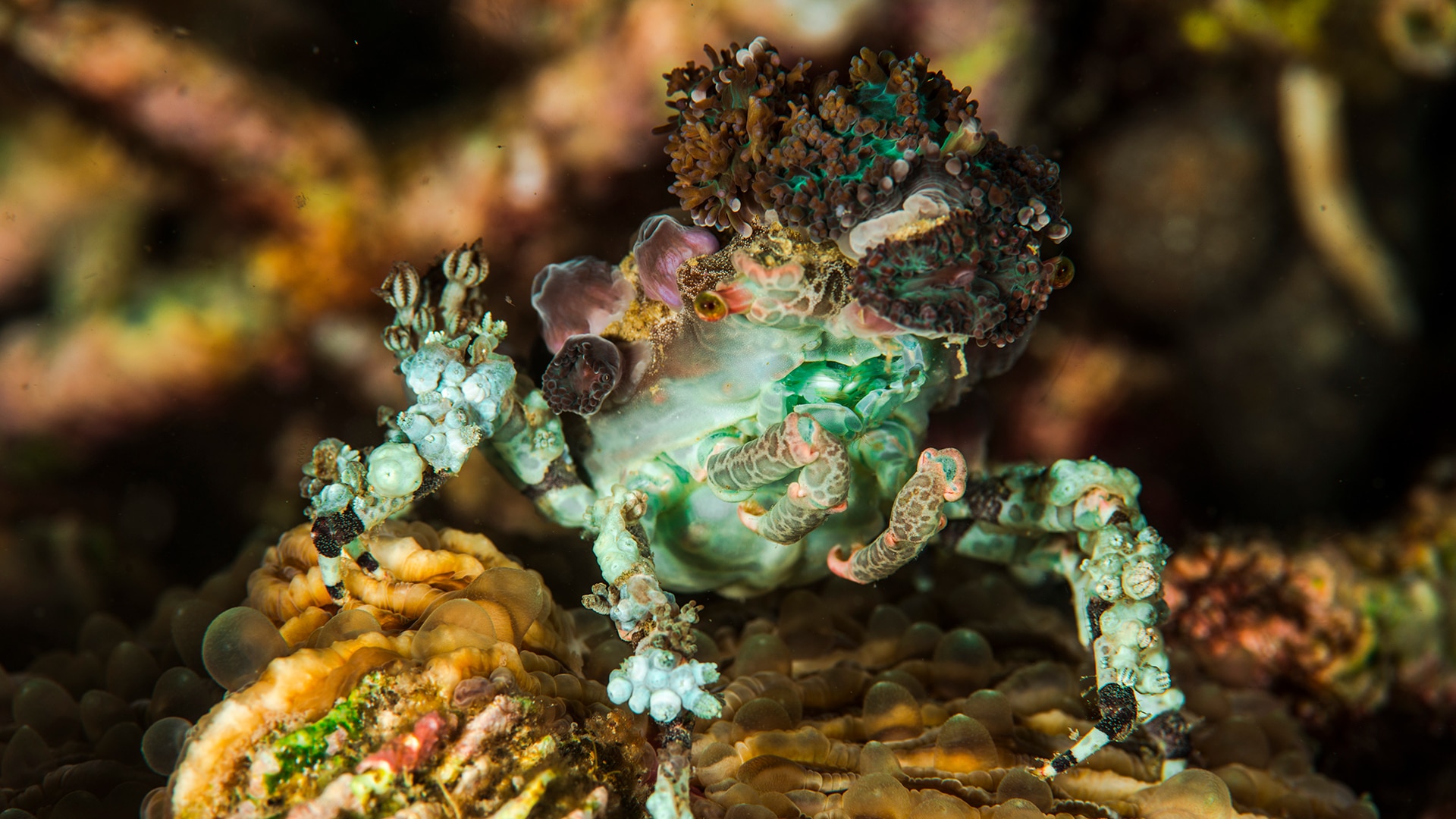
6. Arctic hare
You’ve got to be really determined to catch an arctic hare. Whilst during the summer months they look much like any other hare, in winter their coats turn brilliant white and make them more or less impossible to see against snowy backgrounds. Add to that the fact that their eyes are on the sides of their heads so that they can see nearly 360° without even moving a muscle, and that they can run at nearly 40 mph - you’d better hope you can catch one napping! Oh, as if all of that weren’t enough, they have thick black eyelashes which act as sunglasses, so they’ll almost certainly see you before you see them anyway. Good luck!6
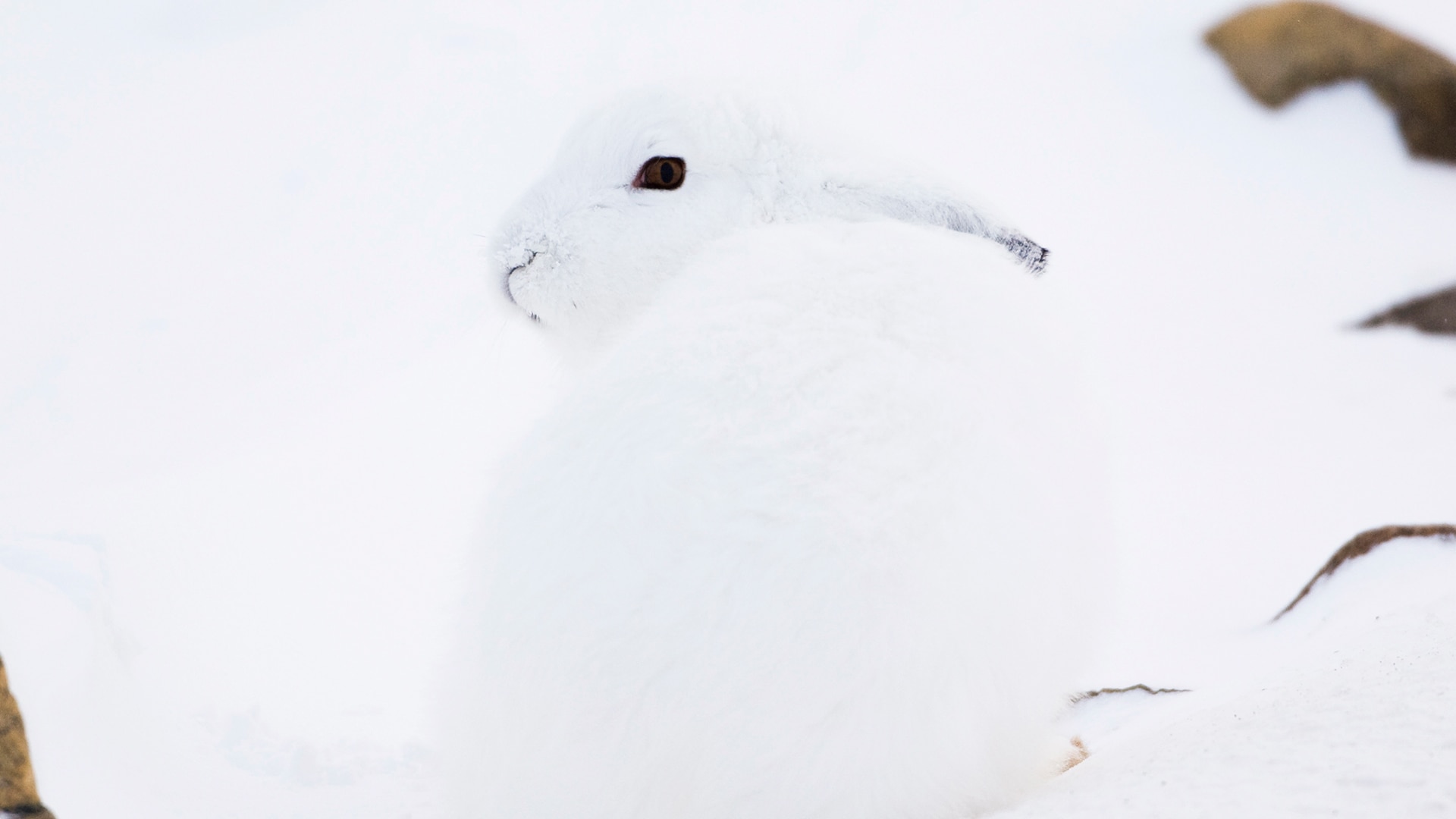
7. Owl
Sometimes, survival really does just come down to evolution. Owls whose feathers look enough like the trees in their habitat to camouflage them are the successful species. Those big ‘ears’ you see on some owls are actually not ears at all – like most birds, owls’ ears are just little holes in the side of their heads. The 'ears' or 'horns' are actually tufts of feathers, there simply because they look like twigs when raised to help them to hide. Owls also change their shape to hide more effectively, which is called ‘concealment posture’. They either squat or lift themselves up to be taller and skinnier to appear less recognisably owl-like, and even sway in the wind to mimic the branches of the tree. They’re concealing themselves not just from predators but also from smaller songbirds that may mob them (divebomb them in a group) and therefore give away their location.7
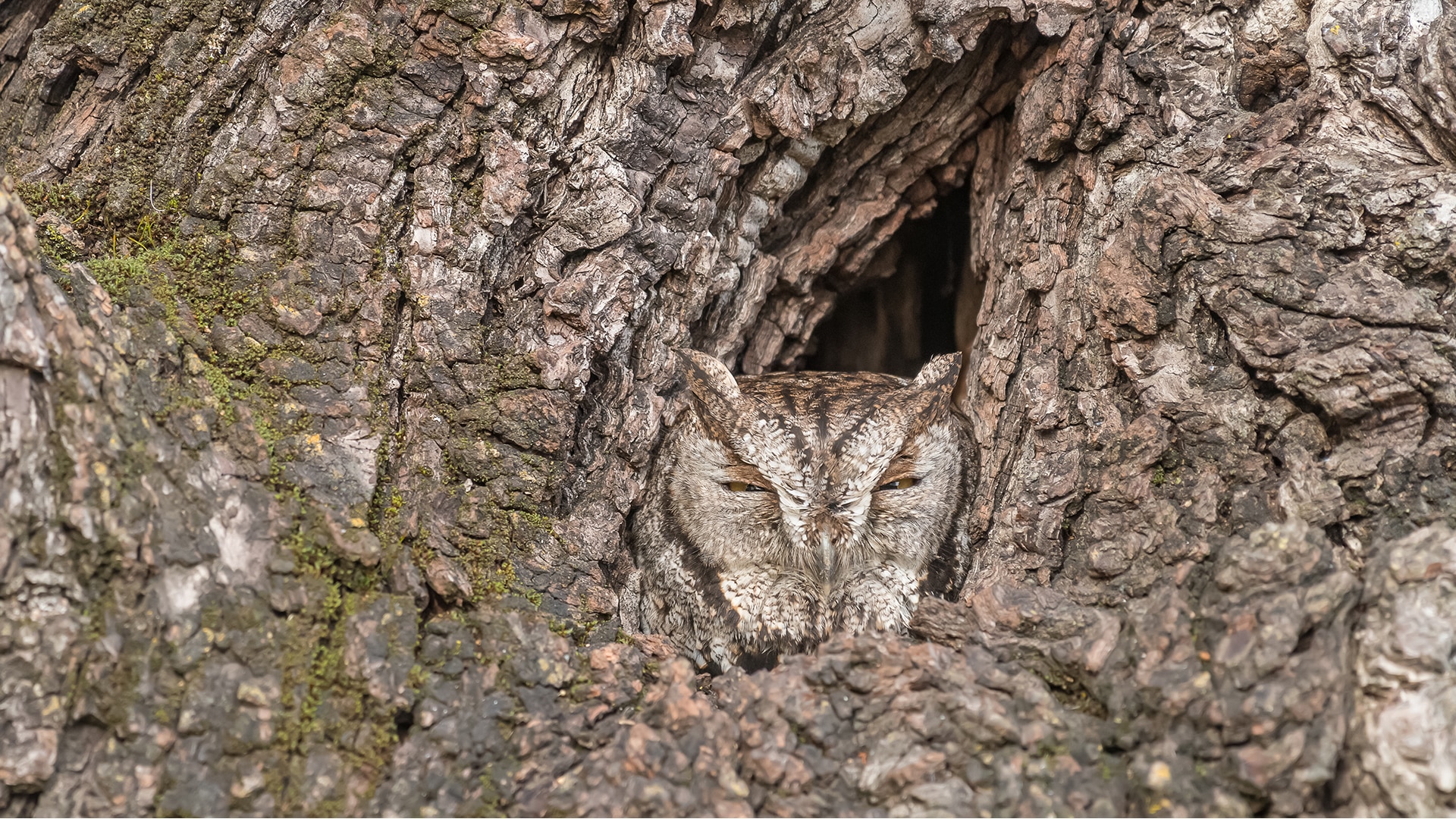
8. Sidewinder rattlesnake
Found on the windblown desert sands of the US and Mexico, the sidewinder rattlesnake has a very simple motive for camouflage. Dinner. As well as having a sandy brown body with elliptical markings which render it pretty much invisible against the rocks and detritus of the desert floor, it also shakes itself into the sand so that its partially covered. The raised scales above its eyes shades it from the sun, and protects its eyes from the sand as it lays in wait for its victims. Small rodents come near it, the rattlesnake strikes, injects the mouse or rat with venom, then follows the victim until it dies, whereupon it eats it. Mission accomplished.8
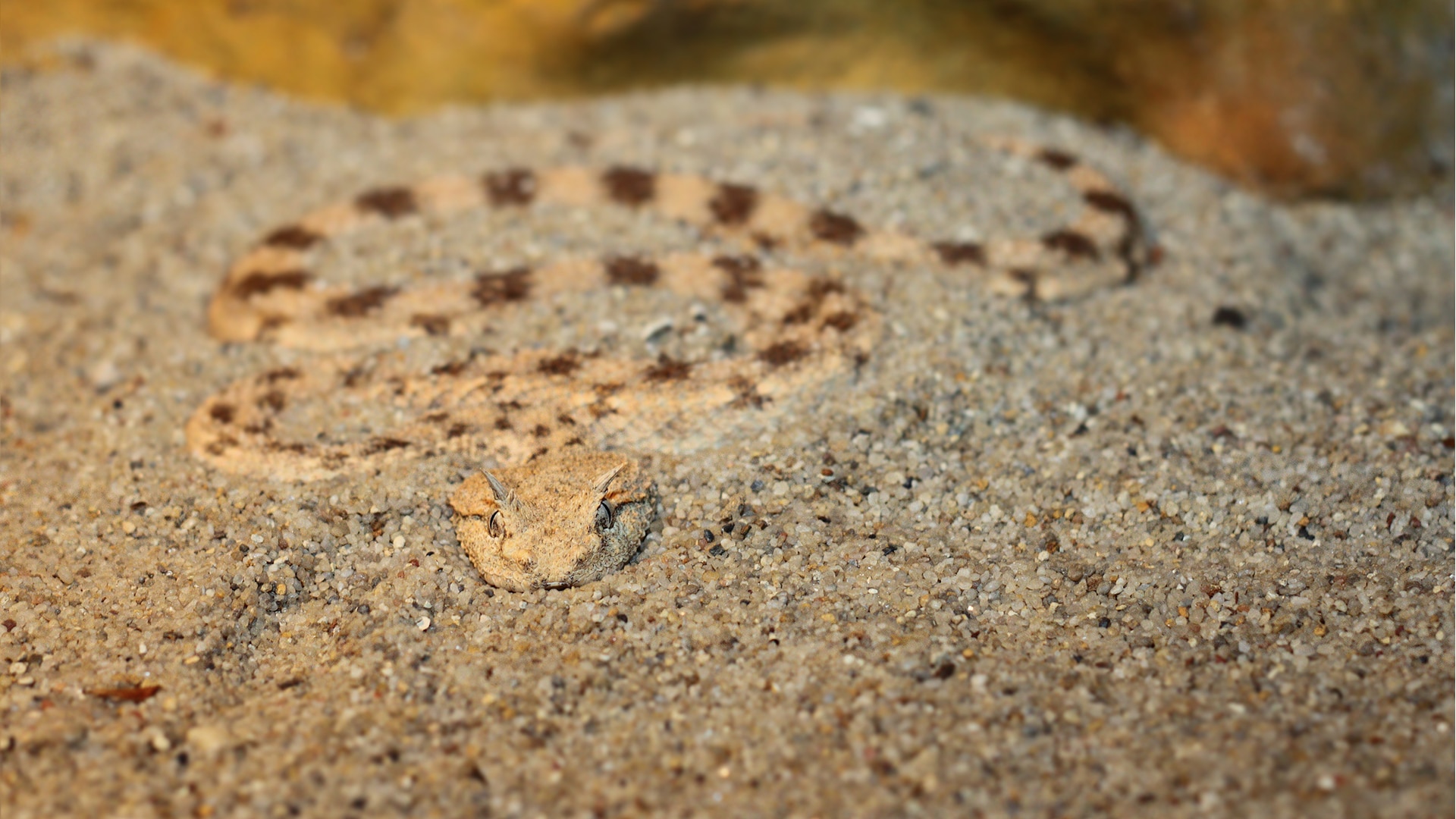
Featured image © Wan Yong Chong I Getty
1. Giant leaf-tailed gecko, 2. Leaf-litter toad, 3. Wrap-around spider, 4. Pygmy sea horse, 5. Decorator crab, 6. Arctic hare, 7. Owl, 8. Sidewinder rattlesnake, 9. Nightjar